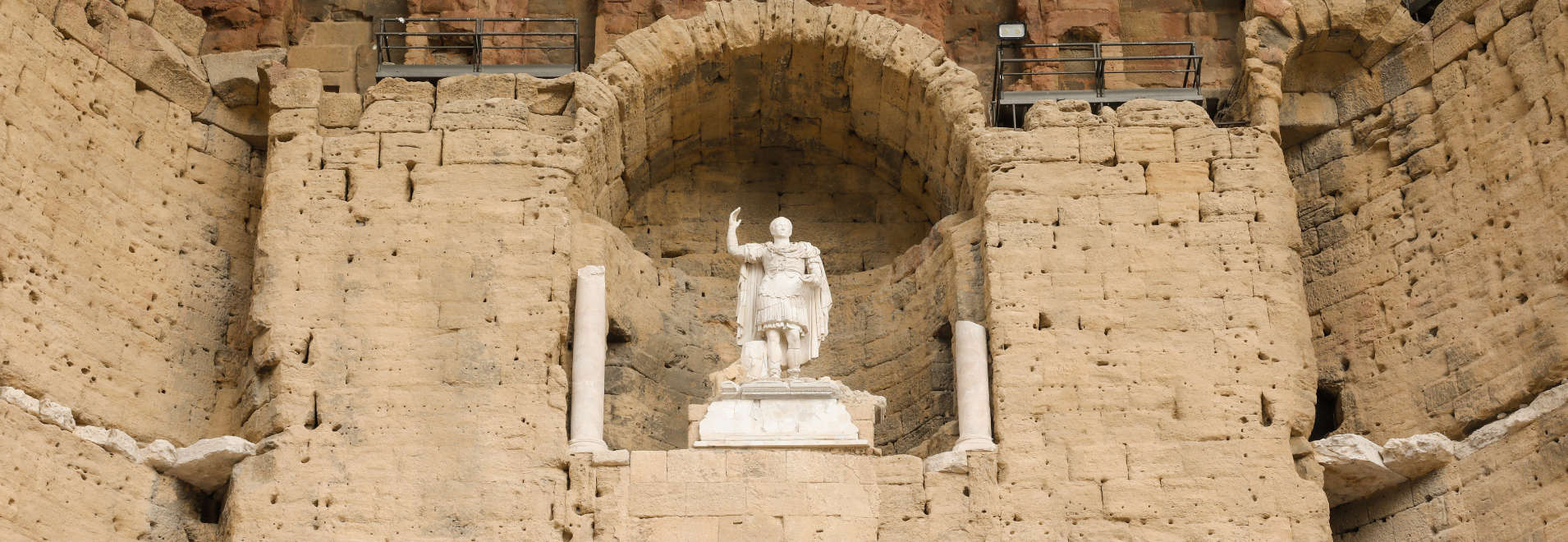
From Roman engineering to modern engineering in Orange
After having successfully solved the enigmas of the Escape Game, being immersed in the virtual tour and meeting the Guardians of History, here we are back at the Roman Theatre in Orange for a tour of “Roman engineering to modern engineering”. The tour is organised into 4 spaces and allows you to understand the technological engineering the Romans used, which we still use today! Any visitor with an entry ticket can access the spaces of the tour.
Duration:
3 hours
Price:
de 10€ to €
Type:
Visit
Parking :
paid
Before taking the stairs to the gallery and the four alcoves, a little visit to the stage and tiered seating is a must, take a moment to think that 2,000 years ago, spectators sat in this very spot to be entertained. It’s the perfect transition towards our first alcove!
The theatre
A place for gladiator fights or circus games!
On stands and thanks to a multimedia screen, we learn first of all that here, in Orange, the set of actors supervised the shows, with comedies, tragedies, and pantomimes. And the Roman engineering reveals itself. For example, there are 2 trenches under the current stage, one of which has a white water spring. The stream was used to carry decor and could also be used during shows, when the staging included barques and small boats for example. In the second trench, the stage curtain literally sprung up thanks to an ingenious mechanism.
As for the actors, we (re)discover that they wore masks which told you what their character’s personality was: the naive person with blond hair, the lover with red cheeks…
We leave the stage behind to go back to learning.

Did you know?
In Roman Theatre, masks always had very wide mouths. It was an ingenious way to be able to project your voice far into the tiered seating, the ancestor of the megaphone in a way!
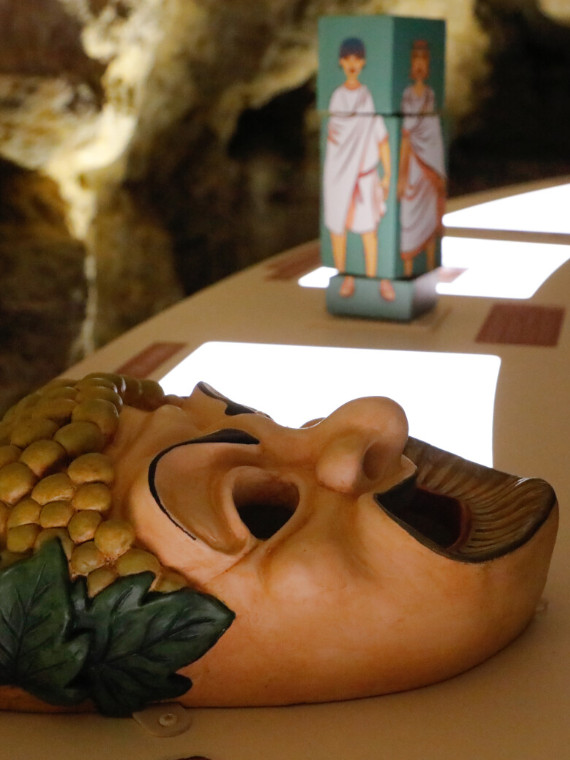
School, writing and laws
Reading and writing were basics for the Romans, who transformed how we exchange information. They were above all pioneers and egalitarians as elementary school (7 to 11 years) was co-ed. This enabled most Romans to know how to read, write, count (by using the abacus, which we spend time getting to know again).
Take a moment to sit and watch a lesson given by a Roman schoolmaster! The youngest can try Roman writing in the coloured sand.
There’s a radical change in decor for the next stage!
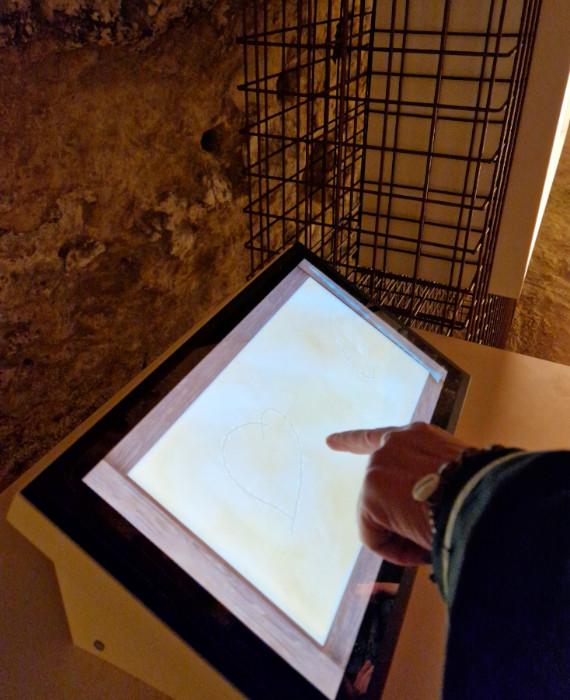

Did you know?
Writing varies depending on the support (stone, parchment, pupillary…). There are four ways of writing: in capitals (texts of laws, easy to make out), cursive (for writing every day), quadrata (codex for example) and rustica (thinner writing).
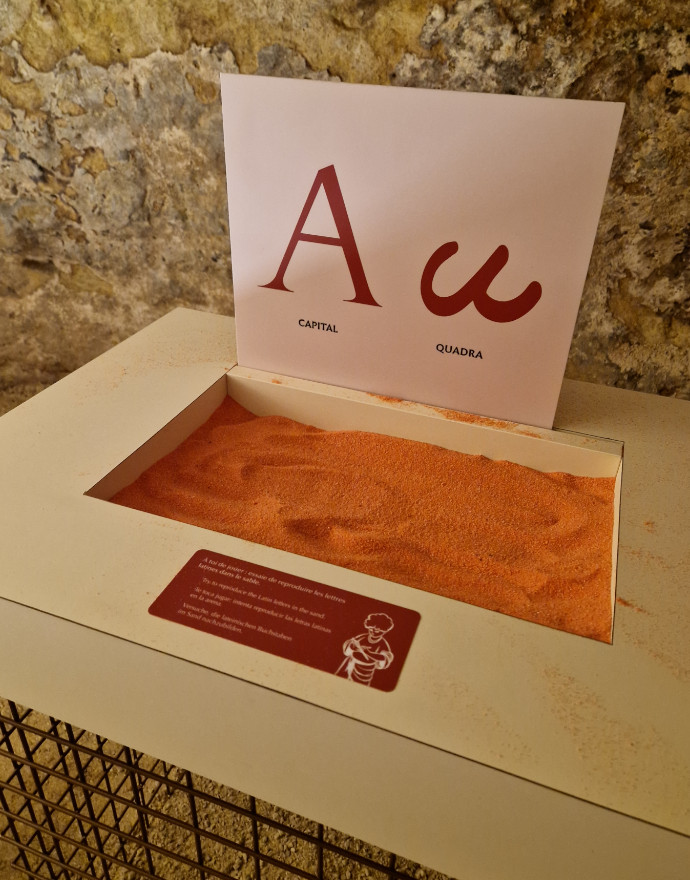
Hydraulics
In this alcove, the trickling of the water accompanies the discovery of Roman engineering for taming white water, with, for example, a number of aqueducts that can still be admired, like the majestic Pont du Gard, or the thermal baths that inspired modern balneology.
Although the Roman baths were not mixed-sex as women had rooms reserved for them, they were however a place where you could spend time socialising. All citizens could gather there to calmly chat or even follow conferences!
Final stage, and not the least, leisure and ancient fast food!
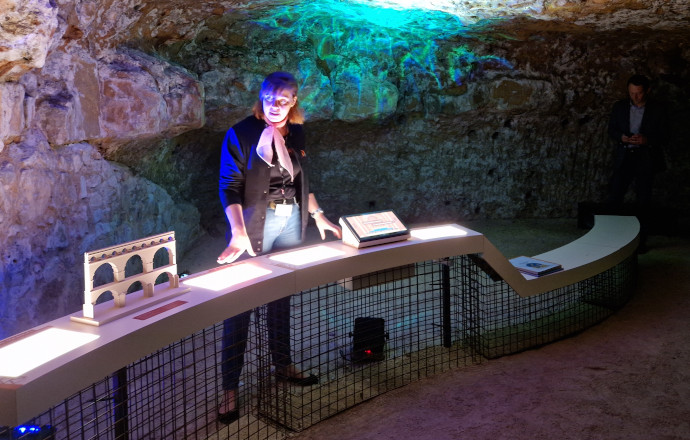
The thermopolium and the games
Here, we learn what made up a traditional Roman meal (legumes, not much meat and fish, cheese, fruit and lots of aromatic plants).
We therefore find out what a thermopolium is, counter in the street where you would meet up to have something to eat, as few houses had a kitchen. A thermopolium in preserved in excellent condition was found at Pompeii in 2020.
In his day, Pliny the Younger in fact wrote about a meal that can be imagined to be pretty lavish: “For each guest we had prepared a lettuce, three snails, two eggs, a spelt cake with its honeyed wine and snow (as you will count it too, or rather you’ll count it before the rest, as it has been lost on the tray), olives, beetroot, cucumber, onion, and a thousand other dishes which are just as fine. You will have heard an actor, or a reader, or a lyre player, or even, admire my generosity, all these artists. But you will have preferred, at I do not know whose house, oysters, mixed offal, sea urchins, and dancers from Gades”
In this alcove, you can also try playing dice and hopscotch (no, not the one in our playgrounds 😉), amusements appreciated at the time.

Did you know?
It is said that the Romans loved “garum” or “liquamen”, a liquid sauce obtained from macerating the viscus of salty fish in the sun.
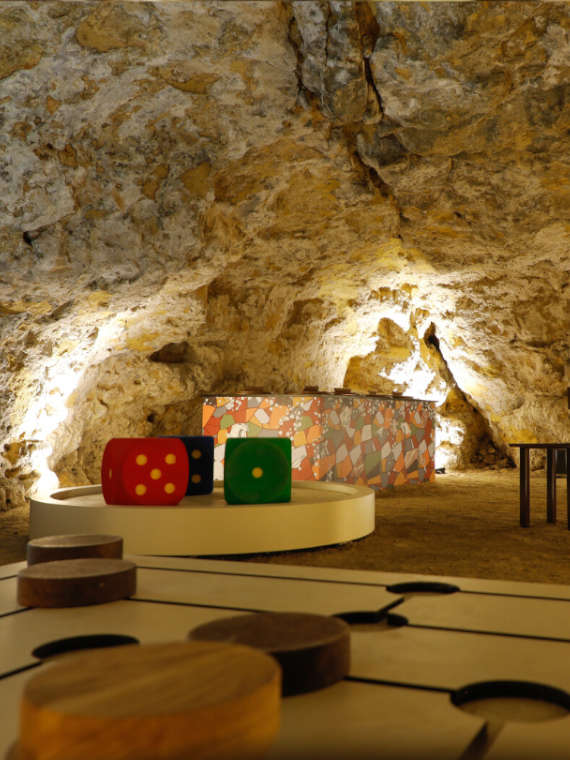
Practical Information

January, February, November, December: 9:30am – 4:30pm
March, October: 9:30am – 5:30pm
April, May, September: 9am – 6pm
June, July, August: 9am – 7pm

Rue Madeleine Roch
84100 Orange
04 90 51 17 60
message@theatre-antique.com

The Roman theatre is in Orange town centre, 29 km from Avignon.
A7 and A9 exit Orange or RN 7 exit Orange centre. There are car parks nearby.
